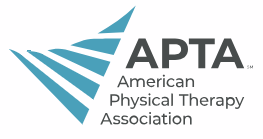APTA Annual Conference Abstracts
APTA NEXT 2017 Conference, June 21 - 24, 2017
Efficacy of Gaze Stability Exercises in Older Adults with Non-vestibular Dizziness
Untitled
1035
EFFICACY OF GAZE STABILITY EXERCISES IN OLDER ADULTS WITH NON-VESTIBULAR DIZZINESS
Courtney D. Hall*1, 2, Stephanie Rouse1, Richard B. Atlee1, Musu Sesay3, Katharina Echt5, 6, Faith Akin1, 4
PURPOSE: The purpose of this study was to determine whether the addition of vestibular-specific gaze stability exercises to balance rehabilitation would lead to greater improvements of symptoms and postural stability in older adults with normal vestibular function who reported dizziness.
BACKGROUNDS/SIGNIFICANCE: Dizziness is among the most prevalent complaints for which people seek medical help and the incidence increases with age. Successful management of dizziness is critical because dizziness is a major risk factor for falls. There is a parallel between the naturally occurring loss of vestibular function with age and the results of pathological loss of vestibular function - both in complaints of dizziness and in an increased risk for falls. It is well-established that vestibular-specific exercises decrease dizziness and improve postural stability in individuals with vestibular disorders. Thus, vestibular-specific exercises may be beneficial for older individuals with complaints of dizziness who are at risk for falls, but who do not have a vestibular diagnosis.
SUBJECTS: East Tennessee State University IRB and James H Quillen VAMC approved the protocol and all participants gave informed consent. Twenty-seven participants with complaints of dizziness and/or imbalance were recruited from the community and completed the protocol (mean age = 71.2 ± 7.5 years, range: 55 - 85). Inclusion criteria included being at least 50 years of age, documented balance or mobility problems and normal vestibular function (defined as normal horizontal semicircular canal function and normal otolith function). Exclusion criteria were cognitive impairment and progressive medical issues that affect mobility.
METHODS AND MATERIALS: This study was a randomized, double-blinded clinical study. The experimental group (GS) performed vestibular-specific gaze stability exercises designed to induce adaptation of the vestibular system by producing retinal slip. The control group (CON) performed rapid eye movements (saccades) with the head stationary against a neutral background without targets to minimize retinal slip. Both groups received standard physical therapy for identified gait and balance impairments and functional limitations. Outcome measures included percent of time dizziness interferes with activities, preferred gait speed, dynamic balance and fall risk as measured by dynamic gait index (DGI) and functional gait assessment (FGA), postural stability as measured by computerized sensory organization test (SOT) and balance-related confidence (ABC). Outcome measures were assessed initially and at discharge from physical therapy.
ANALYSES: All data were summarized using descriptive statistics. To determine the effect of group on outcome measures, 2 X 2 (Time by Group) RM ANOVAs were performed with Time (baseline and discharge) as the repeated factor and Group (GS and CON) as the between subjects factor. Significance was set at p < .05 for all analyses.
RESULTS: There were no baseline differences between GS and CON in age, gender, history of falls, or physical functioning (p > .05). There was a significant main effect of Time: both GS and CON improved significantly in all primary outcome measures (preferred gait speed, DGI, FGA, SOT, ABC) following rehabilitation (p < .05) with the exception of percent of time dizziness interferes with activities (p > .05). There was not a significant main effect of Group (p > .05) or interaction of Time by Group for the outcome measures (p > .05).
CONCLUSIONS: Standard physical therapy improved gait and balance and reduced fall risk for both groups (GS and CON). Furthermore, the inclusion of vestibular-specific exercises did not appear to provide additional benefit to rehabilitation outcomes in older adults with non-vestibular dizziness, which is in contrast to previous findings of additional benefit to fall risk reduction. The use of comprehensive vestibular function testing allowed participants with subtle vestibular deficits to be excluded from the current study and may have contributed to the study findings.
FUNDING SOURCE: This material is based upon work supported by the Department of Veterans Affairs, Veterans Health Administration, Office of Research and Development, Rehabilitation Research & Development Service (Grant No. E7613R).
REFERENCES (at least five within ten years): Beling J, Roller M. Multifactorial intervention with balance training as a core component among fall-prone older adults. J Geriatr Phys Ther. 2009;32:125-133.
Hall CD, Herdman SJ, Whitney SL, et al. Vestibular Rehabilitation for Peripheral Vestibular Hypofunction: An Evidence-Based Clinical Practice Guideline: from the APTA Neurology Section. J Neurol Phys Ther. 2016;40(2):124-55.
Hall CD, Heusel-Gillig L, Tusa RJ, Herdman SJ. Efficacy of gaze stability exercises in older adults with dizziness. J Neurol Phys Ther. 2010;34(2):64-9.
Jung JY, Kim J-S, Chung PS, Woo SH, Rhee CK. Effect of vestibular rehabilitation on dizziness in the elderly. Am J Otolaryngol. 2009;30:295-299.
Kroenke K, Hoffman RM, Einstadter D. How common are various causes of dizziness? A critical review. South Med J. 2000;93(2):160-167.
McDonnell MN, Hillier SL. Vestibular rehabilitation for unilateral peripheral vestibular dysfunction. Cochrane Database Syst Rev. 2015;1:CD005397.
O'Loughlin JL, Robitaille Y, Boivin J-F, Suissa S. Incidence of and risk factors for falls and injurious falls among the community-dwelling elderly. Am J Epidemiol. 1993;137:342-354.
Whitney SL, Marchetti GF, Schade A, Wrisley DM. The sensitivity and specificity of the Timed "Up & Go" and the Dynamic Gait Index for self-reported falls in persons with vestibular disorders. J Vestib Res. 2004;14(5):397-409.
Wrisley DM, Kumar NA. Functional gait assessment: concurrent, discriminative, and predictive validity in community-dwelling older adults. Phys Ther. 2010;90(5):761-73.
KEYWORDS: Dizziness, Vestibular Rehabilitation, Fall Risk
*First author



